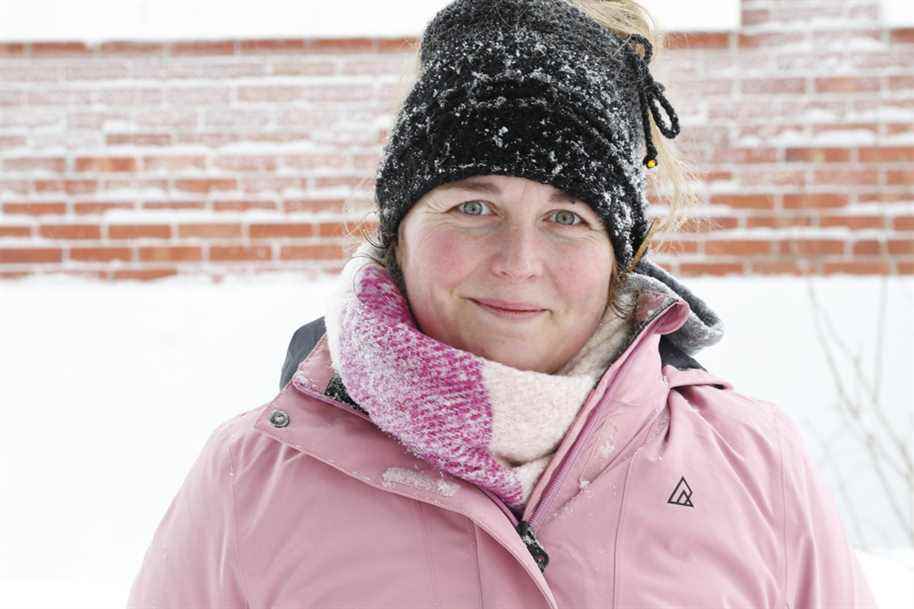“Are we sending our children or not? Dilemma. Parents know too well the situation of schools that close and reopen with a few days notice, but this time the choice seems more heartbreaking. Faced with the rise in hospitalizations, the scarcity of rapid tests and health measures deemed insufficient, should schools be reopened this week?
Posted at 6:38 p.m.
“I don’t know where we’re going. It’s scary. »
Marie-Christine Mallette and her family have been following “all the recommendations” for 22 months, but at the start of the day on Monday, the mother wondered if she would send her 7-year-old son to school the next day. The 24-hour reprieve – courtesy of the storm – was just more hours of dithering.
“Am I going to deprive my boy of going to school? I can bring back the disease as much as he does, ”questioned Mme Mallette, teacher in a primary school. Before the holidays, she says, things were going well in her class. But even in his “exemplary” school in terms of sanitary measures, what awaits him for the weeks to come, now that Quebec fears a lack of staff?
“Me, I have to go to school, but my boy…” At the end of the day, the teacher had made a decision. His mother – a retired teacher – would again be called in to help her son until the situation was “more stable, less dangerous”.
“Lucky and very privileged” to be able to count on her parents, Marie-Christine Mallette will return to her students on Tuesday by doing “everything possible” so that COVID-19 does not come to her home.
His concerns echo numerous testimonies received by The Press. Faced with “the opacity of information”, how to make an informed decision? asks, like several other readers, Hélène Lavertu, whose child goes to secondary school.
“If we could be screened easily, that we were not faced with an explosion of cases…”, she lists. In the context where schools no longer notify parents when positive cases arise in a group, making decisions “becomes unsustainable”, says the woman.
“There will be intervention and analysis on the part of Public Health only when there are 20 or more cases (over a period of 14 days) in a school or center”, advises the Patriotes school service center. .
Each situation brings its concern. “If I have to confine myself, I put my care team in a difficult situation and weaken the hospital system”, writes a nurse at The Press. “What confuses me the most is that there are no additional measures to prevent the spread in schools,” she adds.
Each situation calls for precise calculations. “The risk of catching COVID-19 is greater by sending them back to school, but everything has been a calculation of risks versus benefits for two years. The damage from screens and isolation is starting to outweigh the advantage of not contracting the disease…”, observes Edith Lemery Frenette, mother of two teenagers aged 12 and 13.
Students have “paid enough”
For the teacher of 4and year Catherine Chagnon, there is no doubt that schools must reopen. The academic delays accumulated over the past two years cannot be made up for “by shouting scissors”, and the students have “paid enough”.

PHOTO ROBERT SKINNER, THE PRESS
The teacher of 4and Catherine Chagnon year
In September 2020, she recalls, the teachers were “sent to pasture” in the schools, “without vaccines, nothing”. Nicknamed “Madame Visière” by her colleagues because she was one of the few in her school to wear it in addition to the mask, she caught COVID-19 a month later. His class was closed.
“I wondered if I was going to be intubated,” she says. Now triply vaccinated, she prefers everyone to be in class because “in-person teaching is more interesting for everyone.”
Her students, she says, are eager to get home, and many of her colleagues too. “I think there are many teachers who are not afraid, but we hear them less,” says Catherine Chagnon.
Both for her son in college and for that in high school, Mélanie Routhier is also delighted with the reopening of schools. “It’s much better for their mental health,” she says.
She nevertheless deplores that “the burden” of the success of the reopening is placed on the parents, “when we are already in a bit of a disaster scenario”.
“If he opens the schools, the government has a responsibility to do everything to keep them open, to make sure they don’t close again in three weeks. We need to make it as consistent as possible. Going forward, then going backwards, that’s what people are no longer capable of,” says Ms.me Routhier, who deplores the difficulty of access to rapid tests.
That’s the problem, says high school history teacher Marie-Ève Lessard. Back-to-school conditions are “dangerous”.
“We don’t have air exchangers, we don’t know if we have CO sensors2 functional, we don’t have rapid tests for high school students, isolation [si un élève est positif] has been reduced to five days”, lists Mme Lessard. Not to mention, she adds, the disappearance of class bubbles, which made it possible to better trace contacts.
Five days: length of time children under 12 with symptoms of COVID-19 must self-isolate, regardless of vaccination status.
400: number of air exchangers that have been installed in schools in the province so far.
Source: Government of Quebec

